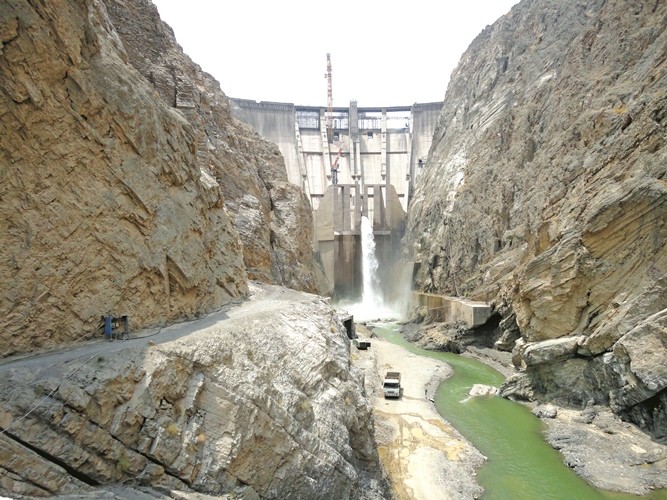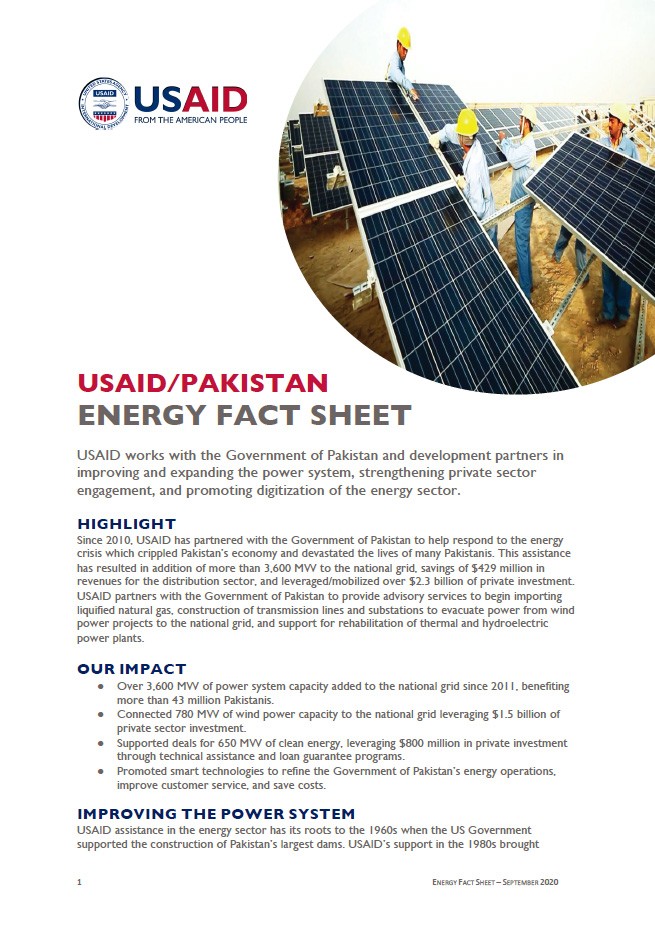Speeches Shim

The United States Agency for International Development (USAID) works with the Government of Pakistan and development partners to improve and expand the power system, strengthen private sector engagement, and promote digitization of the energy sector.
HIGHLIGHT
Since 2010, USAID has partnered with the Government of Pakistan to help respond to the energy crisis that crippled Pakistan’s economy and devastated the lives of many Pakistanis. This assistance has resulted in the addition of more than 3,600 MW to the national grid, savings of $429 million in revenues for the distribution sector, and leveraging mobilization of over $2.3 billion in private investments. USAID also partners with the Government of Pakistan to provide advisory services to begin importing liquified natural gas, construct transmission lines and substations to evacuate wind-generated power to the national grid, and rehabilitate thermal and hydroelectric power plants.
OUR IMPACT
- Added 3,600 MW to the national grid, benefiting more than 43 million Pakistanis.
- Leveraged $1.5 billion of private sector investment to connect 780 MW of wind power capacity to the national grid.
- Supported deals for 650 MW of clean energy by leveraging $800 million in private investment through technical assistance and loan guarantee programs.
- Promoted smart technologies to refine the Government of Pakistan’s energy operations, improve customer service, and reduce costs.
IMPROVING THE POWER SYSTEM
USAID assistance in the energy sector has its roots to the 1960s, when the U.S. Government supported the construction of Pakistan’s largest dams. USAID’s support in the 1980s brought several improvements and state-of-the-art technologies in Pakistan’s transmission and the distribution sectors. Today, USAID supports 1,121 MW of hydroelectric and thermal generation capacity in three provinces. This work includes the construction of the Golen Gol and Gomal Zam hydropower projects and the renovation of Tarbela dam in Khyber Pakhtunkhwa. These hydropower projects provide flood control and needed water storage for irrigation and household use. In addition, USAID worked with the Government of Pakistan to increase electric transmission capacity by 2,293 MW by repairing and replacing aging equipment at substations, as well as installing new transmission lines and substations at Jhimpir wind corridor and Muzaffarabad. USAID also worked with Pakistan’s power distribution companies to improve management systems, upgrade equipment, and perform maintenance on the power distribution network. These improvements recovered 212 MW of distribution capacity and helped distribution companies recover over $429 million in revenue.
PRIVATE SECTOR ENGAGEMENT
To increase the availability of financing for underserved borrowers who are often ignored, USAID partnered with four local banks to provide a partial loan guarantee to provide financing to such underserved borrowers, this guarantee not only benefit small- and medium-scale borrowers but also help banks expand their lending portfolio and extend longer-term loans for clean-energy projects. This partnership has already mobilized $18 million of a planned $54 million in financing for biofuel and solar projects totaling 40 MWs. Additionally, USAID assistance to the Government of Pakistan and private sector developers supporting clean energy deals leveraged $779 million, adding 610 MW into the national grid. Further, USAID continues to support the improvement of the policy and regulatory environment.
DIGITIZATION OF THE ENERGY SECTOR
USAID introduced smart meters technology in the government-owned distribution companies (DISCOs) to improve their billing efficiency and power management. Additionally, USAID assisted Pakistan Information Technology Company (PITC) in establishing a smart grid integration and testing lab in Lahore. This lab will enable PITC to test and certify different smart grid technologies, such as smart meters, and promote research and development on smart grid technologies designed to improve energy use. Additionally, USAID provided several new planning tools such as ArcGIS and Synergy to DISCOs to improve their planning capabilities as well as the latest software to the National Transmission & Despatch Company (NTDC) and the Central Power Purchasing Agency Guarantee Ltd. to expand and revamp their planning capabilities.



Comment
Make a general inquiry or suggest an improvement.